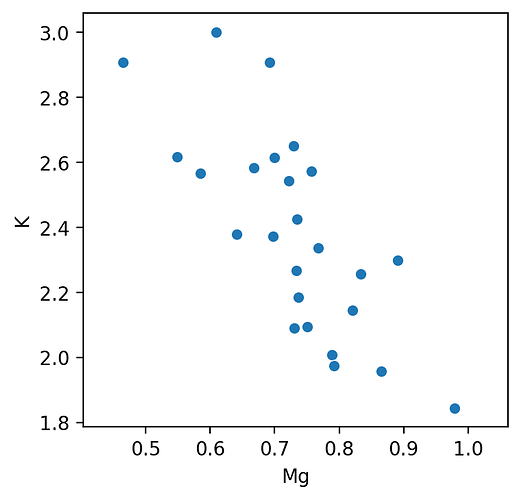I always welcome it when people question my statements, it can lead to clarifications and may also help me improve if what I said was wrong (hey, I am far far from perfect).
In this case, my statement was too broad and wrong in the large scheme of things.
You are right in that potassium has specific transporters and, in general, Mg does not antagonize K uptake in higher plants due to the presence of specific K transporters that Mg never competes with. This is especially true in plants that have high K demand (tomatoes, cucumbers, bananas, etc). The opposite case, where K antagonizes Mg, is the much broader case, as K does compete with the more common non-specific channel transporters used by Mg.
There is no widely recognized Mg antagonism of K uptake. Although there are some published experiments in specific plants that show this happening, they have not been thoroughly reproduced in the literature.
My statement about cannabis and Mg antagonism comes from some information from leaf tissue data. The graph below shows you the relationship between K and Mg levels for the same strain across many different crops, taken at the same time in flower. Data I have collected seems to show what seems like a strong antagonism of Mg to K. For this particular strain, high K only seems possible under lower Mg in tissue.
From my experience, cannabis does not seem to be a strong uptaker of K, it rarely drops K concentration below its initial concentration in the nutrient solutions in DWC and K doesn’t increase proportionately in tissue when K concentrations are increased in solution. Cannabis plants will resist K accumulation beyond around 3.5% in tissue - per my experience - while other plants will happily take K to 6-7% when fed ample K.
This leads me to believe that the plant might lack large numbers of K specific transporters while it might have a significant number of Mg2+/H+ specific transporters. If it is using a substantial number of non-specific transporters for K+ transport, then K might be antagonized quite effectively by Mg, per my previous assessment.
With all that said, I recognize I have done no research on transporters in cannabis roots, nor do I have unequivocal data showing that Mg always antagonizes K. Although the above data shows this behavior for one strain for which I have a lot of data, I have indeed seen cases where high K and high Mg in tissue coexist (as in @Cropster tissue).
Given that Mg antagonism of K is rare, much stronger evidence than what I’ve presented here would be needed to validate this conjecture. I apologize for making such a broad statement without enough evidence.
@Broggemann Thanks for posting this very important clarification. Feel free to correct my statements in the future or ask for further clarification if they conflict with any information you might have.
